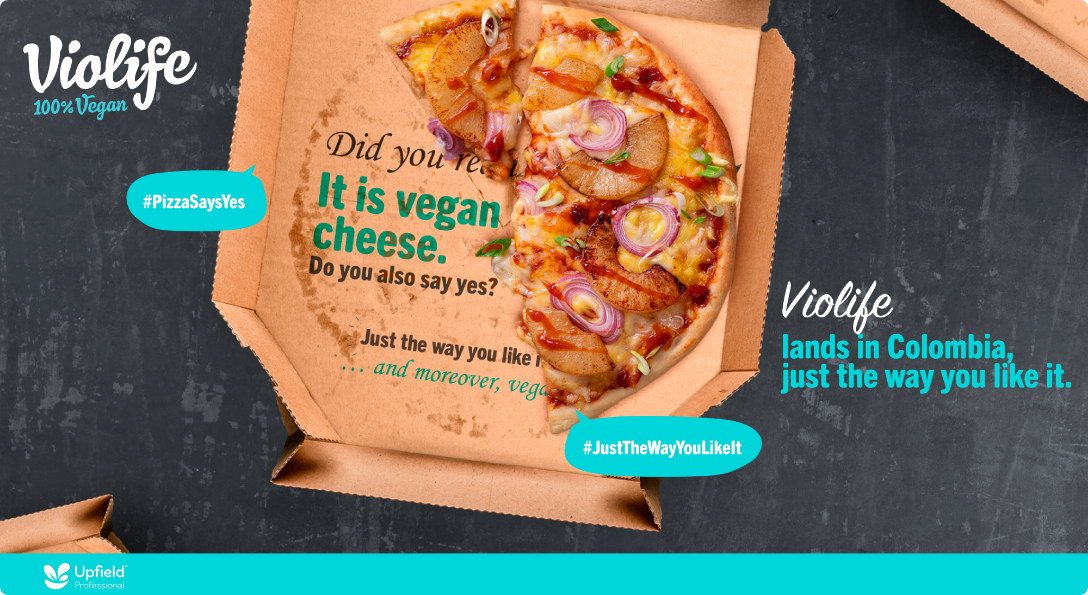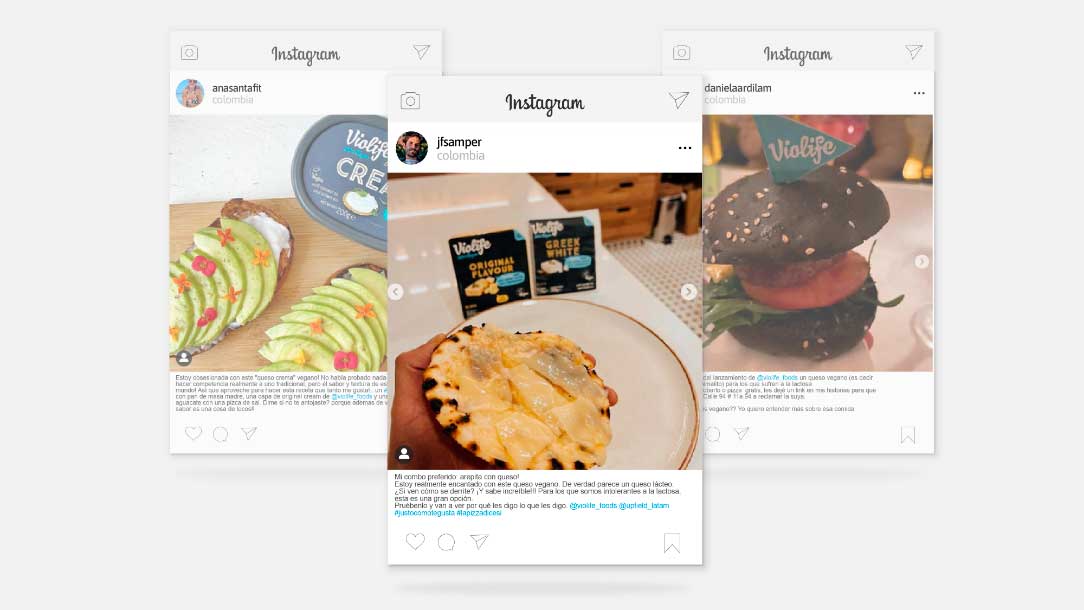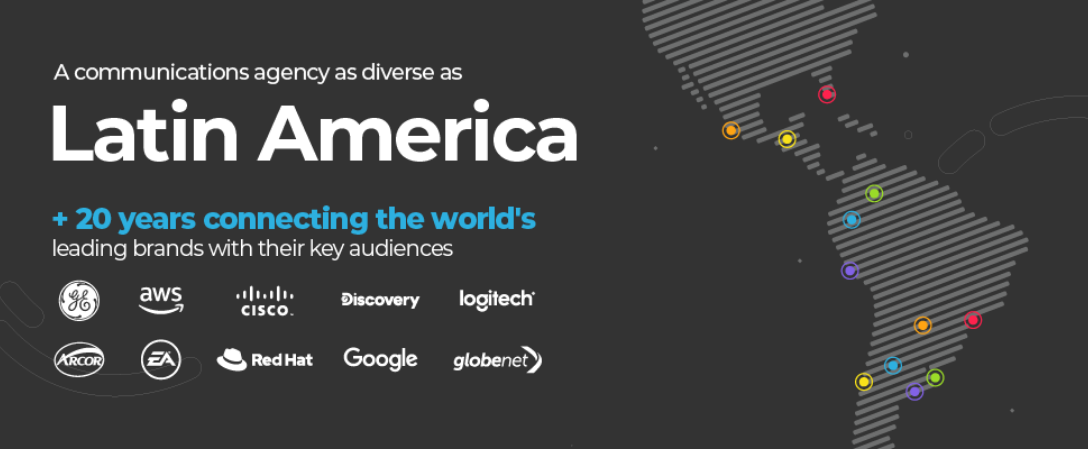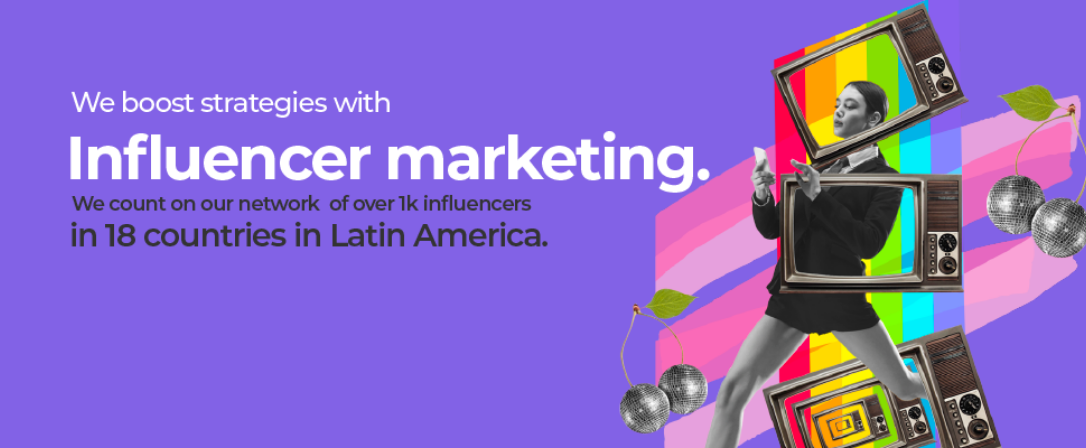The secrets to effective
PR and communication strategies
Reading time: 20 minutes
The world is spinning, the audiences are changing, and many are wondering if public relations are destined to become completely irrelevant to brands’ overall communication strategies. We believe it is not, but it has been undermined by the eagerness of PR agencies to seek only publishable stories and to track no other metrics than the number of press releases published on the media.
Since we figured out that the key to effective PR and communication strategies is to create memorable stories, our method ―which embraces communication in all its nuances― has proven to be more than successful for brands such as Google, Logitech, Discovery, Makro, Electronic Arts, General Electric, Cisco, among others.
Here is how we face the challenge of creating a positive strategic impact through PR, by applying four key moments when creating effective communication strategies. For instance, we review one of our favorite and most recent success stories: Violife’s launch campaign in Colombia, which was a finalist for the SABRE Awards Latin America 2022, in the Geographic – South America category.
The PR is a matter of focus
As communications evolve, in an increasingly fast-paced market that favors immediacy, audiences demand much more than text-based messages echoed over and over again in the media. Hence, the mere task of positioning a brand in the press has lost relevance when trying to implement effective strategies, while PR and communications agencies are losing ground in their clients’ strategic decision-making. The reason is quite simple: they have lost focus.
When all efforts are spent on getting as many press releases as possible published in the conventional media -or their digital versions-, we lose sight of the primary aim of PR agencies: to capture the attention of public opinion, through the media’s agenda.
At MileniumGroup, as and specialized PR and communications agency, we are convinced that this is a matter of focus; therefore, we concentrate on what brands need to be noticed: to build memorable stories. Stories that come to life in public opinion, stories able to get fixated, replicated, and amplified from a natural interest.
This is something we know well, with an average of more than 500 stories published per country each month; and this is how we at MileniumGroup, complete the PR cycle.

Best of all: although not all news are good stories, good stories always become news.
What makes a story memorable?
There is no foolproof way to make a story unforgettable because each one is unique and unrepeatable… That’s the magic of it! And in this eternal challenge of creativity, the key is our team’s sensitivity to understanding and addressing what audiences are looking for (even if unknowingly) in an innovative way.
For a story to truly impact, as humanly as possible, it must appeal to people’s instincts and curiosities. It is not enough to announce a key message hoping that someone will listen to it, because publishing a story in the media does not assure the impact we need to have on the audience; it is necessary to boldly use all available resources to build, change or enhance perceptions that will eventually lead to actions favorable to our aims.
Of course, this has to be grounded on real data and a profound understanding of social settings and communication trends. And when it seems that everything has already been said, the approach needs to be experiential and action-based, rather than word-based. Creativity is now, more than ever, essential.
What is our secret to effective communication?
While we do not have the winning formula to make a campaign successful, we do have a solid method to design and implement effective communication strategies in four steps: know, plan, create, and implement.
So, to show you exactly how it works, here are the details of our creative process for building one of our most successful campaigns in recent years: the launch of Violife in Colombia, a global brand with more than 30 years of experience in developing and producing plant-based food products.
If you want to deepen on how we make memorable PR, learn about one of our best success stories:
Violife Colombia
Enter your email to download the full story
Every cautious and rigorous planning begins with a compelling finding. And for those who seek it, research is a must.
So, before taking any decision, you need to have at least an inkling of where you intend to take your audience as well as an outline of your major aims. Of course, it is also essential that you understand precisely what your starting point is and what circumstances you are going to face.
Amid the vast amount of information available, this task may seem complex and costly. However, it is not out of reach for a good work team, trained in planning and capable of properly using research methodologies that are precise and in accordance with what you should be looking for.
After years of experience, we have identified the four pillars of optimal research, able to fuel a truly strategic communication campaign:

¿Who is your audience?
Define and describe who are you going to speak to. ¿How? Yes, you have to create your Buyer Persona: a semi-fictional representation of your target audience (or a very personal depiction of your ideal customer), considering demographics, interests, habits, needs, potential touchpoints, etc.

So how's the conversation going?
You must be well aware of what is being said about the relevant matters, who is saying it, how, and where. Pay special attention to where your brand stands in that conversation and, of course, to the performance of your competitors.
At this point, methods such as Social Listening are priceless, and there are some tools to ease the task: Meltwater, for instance, is perfect to track messages related to your brand on social media platforms. User surveys come also very handy, for they are effective for measuring perceptions from a statistically significant sample of the audience (ideally, between 50 and 100), and they are now easy to perform
since Google Forms, SurveyMonkey and other similar platforms appeared. Others, such as Message Analysis are not very popular nowadays but remain valuable for an in-depth understanding of narratives.
At MileniumGroup we use Media Audit, a survey among journalists specialized in a certain industry to evaluate how the relationship between a brand and the media is going: do they know it, have they tried it, have they published about it? This is a good way to decide whether we must build a relationship from scratch or rather improve the existing one.
How about trends?
To stay updated on the main industry and consumer trends you should look up tertiary sources like reports from consulting firms or specialized industry reviews. Remember, however, that these are not handbooks but references to inspire your own innovative ideas.
What does SEO recommend?
Attention! There are no high-level communications strategies without SEO research (Search Engine Optimization or how a subject is positioned in search engines). No wonder it is causing such a stir in the world of digital communication and content creation… It is key to know exactly what people are looking for, what are their specific interests on a specific matter, what are their information needs, and what your messages should include.
Now, let’s look at a practical case:
When conceiving Violife’s launching campaign in Colombia, we faced several critical questions that guided our investigation process: how do audiences perceive plant-based food products? Are there any biases affecting or limiting the consumption of these products? How mature the vegan food market is in Colombia? Is there any chance that these products appeal to non-vegan consumers?


Our investigation revealed that the demand and supply of plant-based food have increased significantly all over the world (including Latin America), although the population identified as vegan remains steady. So we realized that what has increased is the number of people who choose to replace some everyday products with plant-based alternatives, whether for health reasons, ethics, or commitment to the environment. And that is where we found our audience, those people we wanted to reach.
We used different research techniques such as social listening, analysis of opinion trends and consumption habits around veganism, and a survey to find out people’s perception of plant-based foods, whether they had tried them or not, or were willing to try them, and for what reason.
Here, our compelling finding was a bias against the taste and performance of plant-based products.
2. Plan: shape it and decide
That finding we have talked so much about is a gap, an empty place that we decide to occupy: the purpose behind strategic planning and decision-making.
So, for planning, the first step is always simplifying the results of your research. This does not mean to prioritize some and dismiss the rest, but to narrow their meaning into a few catchy lines that perfectly describe how you aim to conquer that empty space (the opportunity you have identified), which will guide all your decisions. The outcome is what we call “the strategy”; and for your entire team to work with it, it’s crucial to write it down in a concise, powerful, and compelling way.
A solid strategy that fits your communication goals is the starting point to deploy your concept, brand narratives, key messages, preferred formats, channels, etc. Once you figured this out, the next step is to make creative decisions to shape it, condensing it into what we call our Big Idea.
A solid strategy that fits your communication goals is the starting point to deploy your concept.


For Violife, the finding that prompted our campaign was a common bias: a widespread distrust of vegan products in Latin America, based on the belief that they do not taste or work the same as their non-vegan versions, or even that they are awful in terms of flavor, appearance, texture, consistency, etc.
Keeping this in mind, we took one of the brand’s narratives as a baseline: Violife tastes, looks, and performs just the way you like it. Then, we put our concept and narratives into the tagline “Just the way you like it, and moreover, vegan”.
Therefore, we decided to challenge this pledge, putting the Violife cheese’s performance to the test against a demanding judge that admits nothing but the highest quality: the pizza. Why? Because it is universal and allowed us to target all kinds of audiences, staging one of Violife’s value propositions: inclusive, top-quality products for vegans and non-vegans at an affordable price. Thus, we launched the concept “Pizza says yes”.
To do so, our Big Idea was to carry out a Blind Test with a group of cheese and pizza lovers representing all audience segments, regardless of their diet and purchasing power. We figured that if we could persuade them, we might be able to persuade all Colombians. But we had to overcome the barrier of prejudice first.
How did we do it? With lots of creativity…
3. Create: intuition, creativity, and risk
When strategic planning is done, what comes next is to translate these ideas into significant actions. This is the time for creative decisions, and here is when it all tends to be more relative.
To talk about intuition may seem a little mystical, but it is paramount to creating memorable stories. A high sensitivity and great interpretation skills are key to conceiving the unexpected, the unforgettable. Some courage is also needed, for it is impossible to succeed without taking some risky (although well-supported) decisions. And, no doubt, none of this would be possible if the leadership team is not willing to sponsor mistakes when they come, for all the new and amazing ideas needs less fear and way more friends.
And, since everything in communication is cultural, we must estimate how cautious we need to be when implementing a campaign, and acknowledge its boundaries: if necessary, break down a major campaign into small micro-moments to mitigate any cultural tensions that may arise along the way.
A high sensitivity and great interpretation skills are key to conceiving the unexpected, the unforgettable.
Anyhow, this is our expert opinion: communication is a contact sport where fancy press releases and grand events have given way to experiences based on direct interaction and connection. Our call is to detach from the algorithm and give emotion its worth back. Explore the possibilities of a renewed PR that embraces communication in all its nuances.
So, to manage this creative endeavor, we recommend using the marketing funnel as a framework, analyzing how it applies to your particular case, and then deciding which actions to carry out phase by phase. Please find a middle ground between strategy and creativity: the research data and the brand identity define the limits of what is possible.

There are many ways to deploy a communication strategy, but these are the ones we use the most:
Content Marketing: create and amplify digital content to build interest in a brand, without explicitly promoting its products and services. More so, if you consider SEO guidelines. Think of social media posts, podcasts, videos, articles, Ebooks, Whitepapers, and more.
Strategic relations: this is one of the most effective traditional PR techniques, and includes activities to build and strengthen the relationship between brands and their environment. Consider interviews, speaking oops, alliances with key organizations, networking events, sponsorships, etc.
C-level visibility: it has proven to be more than useful for companies to position their C-levels as brand ambassadors and industry figures, to build reputation and credibility. Check out the Thought Leadership program.
Event production and attendance: creating or attending industry events is great for brand awareness and positioning, as it is a huge opportunity to build key alliances.
Influencer marketing: collaborations with influencers are becoming more and more popular within marketing teams. The name really says it all, but doing it well has its little tricks.
Creative campaigns: brand activation in digital domains, as well as BTL initiatives, must be considered as a complement to traditional PR practices.
Going back to the Violife case, to turn words into action we ask ourselves: what actions represent our concept in the real world? We knew immediately that to crush our audience’s biases we needed to let the product speak for itself, so we devised and executed a Blind Test that we called “Did you notice?”

We partnered with two renowned gastronomic companies in Bogotá to carry out an experience convened by MileniumGroup, to which we invited 33 influencers and 21 journalists or industry leaders from Colombia. Our guests drank signature cocktails and tasted different gourmet varieties of pizza made with a secret ingredient: Violife’s plant-based cheese. The hack? Nobody knew. In the end, the napkin used to hold the slice of pizza revealed the secret: “Did you notice? Just the way you like it… and moreover, vegan.”
The experience closed with a formal presentation of the brand in the country, which we boosted with press releases, influencer marketing, and media interviews, among others… achieving amazing results!
4. Implement and measure: communication in all its nuancess
After thinking creatively and making all the decisions, once you get a clear view on what’s the path to follow, what comes next is to take action: establish deadlines, assign responsibilities, manage your resources, define dynamics and means to track the execution, design your metrics, etc.
Since we know this stage can be stressful, our advice will always be the same: keep an eye on your goals but don’t be afraid to be flexible when circumstances require. For every other thing, trust your preferred Project Management tool.
Finally, and as any strategy needs feedback, measure the performance of your campaign, considering these two key issues:
More data is not the same as better data: generic PR performance indicators, such as the volume of published notes or their potential reach, do not always measure what really matters. You may better analyze what are the most relevant metrics according to your communication goals, considering the ultimate purpose of communication strategies: did the audience interact with the story? Did your story and your campaign impact favorably any user perception or intention? Don’t be shy, use as many metrics from Marketing or other disciplines as you need. A positioning map or correlation indicators, such as organic traffic rates, as well as the satisfaction with an event, can be of great help.
Centralize your data: this gives you greater control over media relations and the reach/impact of your communications, as it allows you to make smart and fast decisions. For this, we use SMART, our own platform.

More data is not the same as better data
Our Violife campaign was a complete success. We gave out more than 200 free pizzas and people were amazed. We achieved 28 media publications and 132 posts on influencers’ accounts, along with 12 interviews in key media. Through these, we got 1,463,645,827 impressions in the media and 8,452,861 impressions through influencers.

Such was the impact that Violife’s regional management ordered this campaign to be replicated throughout LATAM, due to its affinity with the brand’s story and its compelling results. Our campaign was a finalist for the SABRE Awards Latin America 2022, in the Geographic – South America category.
If you want to deepen on how we make memorable PR, learn about one of our best success stories: Violife Colombia. You can download it in full here.
If you want to deepen on how we make memorable PR, learn about one of our best success stories:
Violife Colombia
Enter your email to download the full story

¡Gracias por tu interés!
Registra tu bandeja de entrada
y descarga el caso.




